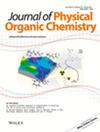Machine Learning Enabling the Prediction of Activation Energies of SPAAC
IF 1.9
4区 化学
Q2 CHEMISTRY, ORGANIC
引用次数: 0
Abstract
This study leverages machine learning to predict the activation energies of strain-promoted azide-alkyne cycloaddition (SPAAC) reactions. Using DFT calculations, 631 sets of bond angles and Mulliken charges from two acyclic alkynes were collected. Multiple machine learning models were trained on these data, achieving high accuracy (R2 > 0.95). Both bond angle and charge were crucial for reliable predictions. The models successfully predicted activation energies for SPAAC reactions with unseen cycloalkynes, within certain limitations.
利用机器学习预测SPAAC的活化能
本研究利用机器学习来预测菌株促进叠氮-炔环加成(SPAAC)反应的活化能。利用离散傅立叶变换(DFT)计算,收集了两个非环炔的631组键角和Mulliken电荷。在这些数据上训练了多个机器学习模型,获得了很高的准确性(R2 > 0.95)。键角和电荷对于可靠的预测至关重要。在一定的限制范围内,模型成功地预测了未见环炔的SPAAC反应的活化能。
本文章由计算机程序翻译,如有差异,请以英文原文为准。
求助全文
约1分钟内获得全文
求助全文
来源期刊
CiteScore
3.60
自引率
11.10%
发文量
161
审稿时长
2.3 months
期刊介绍:
The Journal of Physical Organic Chemistry is the foremost international journal devoted to the relationship between molecular structure and chemical reactivity in organic systems. It publishes Research Articles, Reviews and Mini Reviews based on research striving to understand the principles governing chemical structures in relation to activity and transformation with physical and mathematical rigor, using results derived from experimental and computational methods. Physical Organic Chemistry is a central and fundamental field with multiple applications in fields such as molecular recognition, supramolecular chemistry, catalysis, photochemistry, biological and material sciences, nanotechnology and surface science.

 求助内容:
求助内容: 应助结果提醒方式:
应助结果提醒方式:


